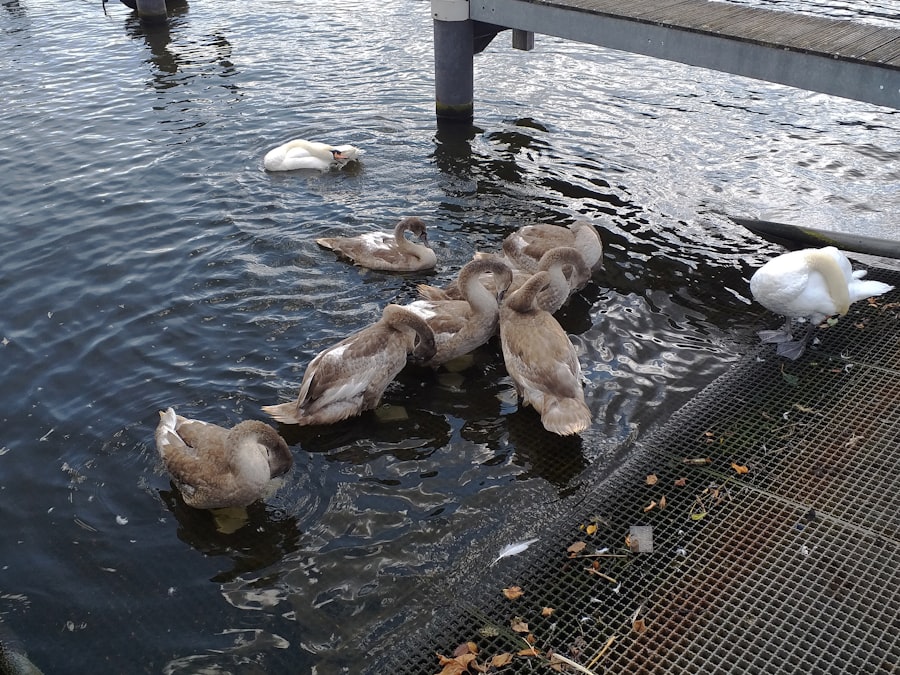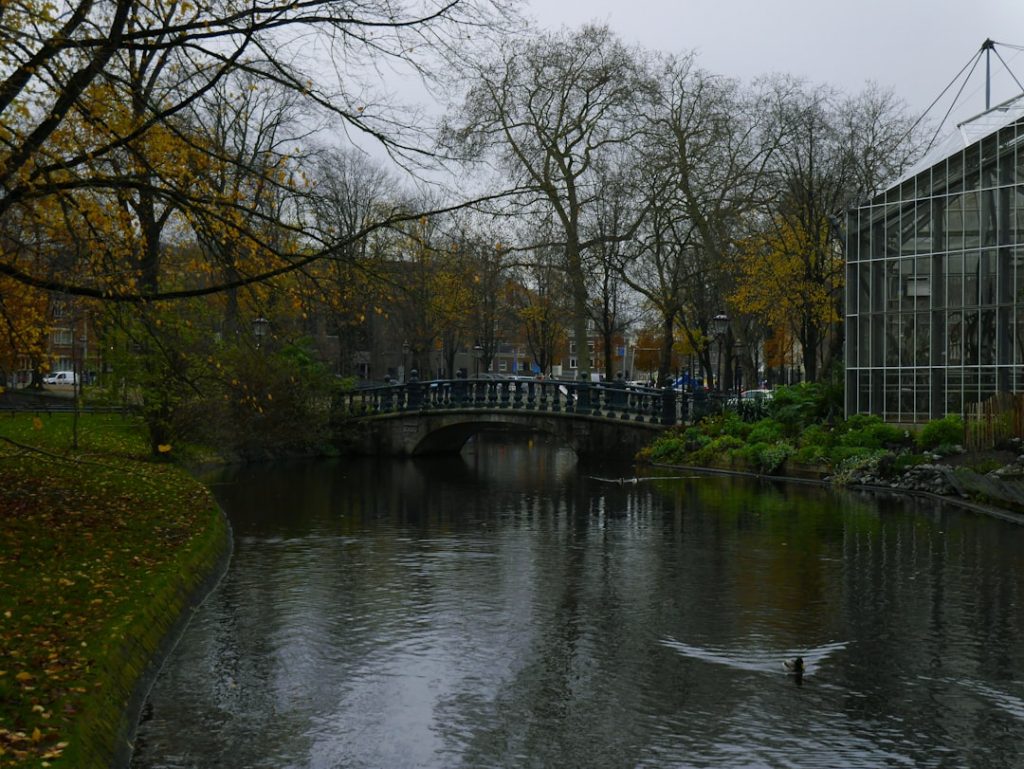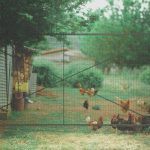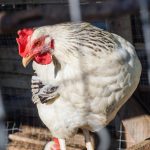Heat stress in chickens is a significant health concern that can lead to severe consequences if not properly managed. Chickens are particularly vulnerable to high temperatures due to their lack of sweat glands, relying instead on panting to regulate body temperature. When exposed to prolonged periods of excessive heat, chickens may experience decreased egg production, reduced feed intake, increased mortality rates, and overall diminished welfare.
The physiological response of chickens to heat stress involves difficulty in dissipating heat, resulting in a buildup of internal body temperature. This can progress to heat exhaustion, heat stroke, and potentially death if not addressed promptly. Common signs of heat stress in chickens include panting, wing spreading, reduced activity, and decreased feed consumption.
Environmental factors contributing to heat stress in chickens include high humidity, insufficient shade, and inadequate ventilation. Poultry farmers must be vigilant in recognizing these risk factors and the early signs of heat stress to implement timely preventive measures and ensure the well-being of their flock. To effectively manage heat stress in chickens, it is essential for farmers to understand the underlying causes, recognize the symptoms, and implement appropriate strategies to mitigate its impact.
This knowledge enables proactive management and helps maintain the health and productivity of the poultry flock during periods of high temperatures.
Table of Contents
Key Takeaways
- Heat stress in chickens can lead to decreased egg production, poor growth, and even death
- Providing adequate shade and ventilation is crucial in preventing heat stress in chickens
- Offering cool and refreshing treats such as watermelon or frozen fruits can help chickens stay cool
- Using misters and fans can help lower the temperature in the chicken coop
- Adjusting feeding and watering schedule to cooler times of the day can help prevent heat stress in chickens
- Creating cooling stations with wet towels or shallow water pools can provide relief for chickens
- Monitoring and observing chicken behavior for signs of heat stress is important for early intervention
Providing Adequate Shade and Ventilation
Shade: A Crucial Element in Heat Stress Prevention
Shade is essential for protecting chickens from direct sunlight and reducing the ambient temperature in their living space. This can be achieved by positioning shelters, trees, or artificial covers in the chicken coop or run to create shaded areas where the birds can seek relief from the sun’s rays.
Ventilation: The Key to Maintaining Airflow
Proper ventilation is crucial for maintaining airflow and reducing the buildup of heat and humidity in the chicken coop. This can be achieved by installing windows, vents, or fans to promote air circulation and cooling. By providing adequate shade and ventilation, poultry farmers can create a more comfortable and safe environment for their chickens, reducing the risk of heat stress and its associated health problems.
Regular Assessment and Adjustment
It is important to regularly assess the effectiveness of the shade and ventilation systems and make adjustments as needed to ensure optimal conditions for the flock. By prioritizing shade and ventilation, farmers can help their chickens cope with high temperatures and minimize the negative impact of heat stress on their well-being.
Offering Cool and Refreshing Treats

In addition to providing shade and ventilation, offering cool and refreshing treats to chickens can help them cope with high temperatures and reduce the risk of heat stress. Cool treats such as frozen fruits, vegetables, or even ice cubes can provide much-needed relief from the heat and help lower the birds’ body temperature. These treats not only offer hydration but also serve as a source of enrichment for the chickens, keeping them engaged and active during hot weather.
Furthermore, providing access to cool water is essential for preventing heat stress in chickens. Farmers should ensure that fresh, clean water is readily available at all times, and consider adding ice or using waterers with built-in cooling systems to maintain a refreshing temperature. By offering cool treats and water, farmers can help their chickens stay hydrated and comfortable during periods of high heat, reducing the risk of heat stress and its associated health issues.
Using Misters and Fans
Misters and fans are effective tools for cooling down the chicken coop and providing relief from high temperatures. Misters release a fine spray of water into the air, which evaporates and helps lower the ambient temperature in the coop. Fans help circulate air and create a cooling breeze, reducing the buildup of heat and humidity.
By using misters and fans in combination with proper ventilation, farmers can create a more comfortable environment for their chickens and reduce the risk of heat stress. It is important to strategically position misters and fans in areas where chickens spend the most time, such as roosting areas or feeding stations. This ensures that the birds have access to cooling relief throughout the day and can seek out these areas when they need to lower their body temperature.
By incorporating misters and fans into their management practices, farmers can effectively mitigate the risk of heat stress in their flock and promote better overall welfare for their chickens.
Adjusting Feeding and Watering Schedule
During periods of high heat, it is important for poultry farmers to adjust their feeding and watering schedule to accommodate the needs of their chickens. Feeding should be done during the cooler parts of the day, such as early morning or late evening, to reduce the metabolic heat generated by digestion. This helps prevent additional heat buildup in the birds’ bodies during peak temperatures.
Additionally, farmers should consider offering smaller, more frequent meals to encourage feed consumption without overloading the birds’ digestive systems. Watering schedules should also be adjusted to ensure that chickens have access to cool water throughout the day. Farmers should check waterers regularly to ensure they are functioning properly and refill them with fresh, cool water as needed.
It may also be beneficial to offer electrolyte supplements in the water to help replenish lost nutrients and support hydration during periods of high heat. By adjusting feeding and watering schedules, farmers can help their chickens cope with hot weather more effectively and reduce the risk of heat stress.
Creating Cooling Stations

Designated Cooling Stations
Creating designated cooling stations within the chicken coop or run can provide chickens with additional opportunities to lower their body temperature and reduce the risk of heat stress. These stations can include shaded areas with misters or fans, as well as shallow pools or tubs filled with cool water for the birds to wade in. Providing these options allows chickens to self-regulate their body temperature and seek out relief as needed throughout the day.
Natural Cooling Elements
Farmers can also consider incorporating natural cooling elements into the chicken environment, such as planting shade-providing vegetation or installing sprinkler systems that mimic rain showers. These features not only offer physical relief from the heat but also provide mental stimulation for the birds, promoting overall well-being during hot weather.
Empowering Chickens to Cope with Heat
By creating cooling stations within the chicken living space, farmers can empower their flock to better cope with high temperatures and reduce the risk of heat stress. This approach not only improves the welfare of the chickens but also helps to maintain a healthy and productive flock.
Monitoring and Observing Chicken Behavior
Finally, it is crucial for poultry farmers to closely monitor and observe their chickens’ behavior during periods of high heat. By paying attention to signs of distress or discomfort, such as excessive panting, lethargy, or reduced activity, farmers can identify potential issues with heat stress early on and take proactive measures to address them. Regular observation also allows farmers to assess the effectiveness of their cooling strategies and make adjustments as needed to better support their flock.
In addition to visual observation, farmers can use technology such as temperature sensors or humidity monitors to track environmental conditions within the chicken coop. This data can provide valuable insights into how heat stress may be impacting the birds and inform decision-making around cooling strategies. By actively monitoring and observing chicken behavior, farmers can better understand their flock’s needs during hot weather and implement targeted interventions to reduce the risk of heat stress.
In conclusion, preventing heat stress in chickens requires a multifaceted approach that addresses environmental factors, behavioral needs, and management practices. By understanding the risks of heat stress and implementing proactive strategies such as providing shade and ventilation, offering cool treats, using misters and fans, adjusting feeding and watering schedules, creating cooling stations, and monitoring chicken behavior, poultry farmers can effectively mitigate the negative impact of high temperatures on their flock’s well-being. By prioritizing these measures, farmers can help their chickens stay comfortable and healthy during periods of hot weather while promoting better overall welfare for their flock.
If you’re looking for ways to keep your chickens cool in the summer, you may also be interested in learning about some interior ideas for chicken coops. Check out this article for some helpful tips on creating a comfortable and cool environment for your feathered friends.
FAQs
What are some ways to keep chickens cool in the summer?
Some ways to keep chickens cool in the summer include providing shade, ensuring proper ventilation in the coop, offering cool water for drinking, and using misters or fans to lower the temperature.
Why is it important to keep chickens cool in the summer?
Chickens can suffer from heat stress in hot weather, which can lead to decreased egg production, health issues, and even death. Keeping chickens cool in the summer is important for their well-being and productivity.
How can I provide shade for my chickens?
You can provide shade for your chickens by using natural shade from trees or shrubs, setting up tarps or umbrellas in the chicken run, or creating a covered area in the coop or run.
What are some signs of heat stress in chickens?
Signs of heat stress in chickens include panting, lethargy, decreased egg production, pale combs and wattles, and in severe cases, collapse or death. It’s important to monitor your chickens for these signs during hot weather.
Should I use misters or fans to cool my chickens?
Misters and fans can be effective ways to cool chickens in the summer, as they help lower the temperature and provide relief from the heat. However, it’s important to ensure that the chickens have a dry area to retreat to if they prefer not to be in the mist or wind from the fan.
Meet Walter, the feathered-friend fanatic of Florida! Nestled in the sunshine state, Walter struts through life with his feathered companions, clucking his way to happiness. With a coop that’s fancier than a five-star hotel, he’s the Don Juan of the chicken world. When he’s not teaching his hens to do the cha-cha, you’ll find him in a heated debate with his prized rooster, Sir Clucks-a-Lot. Walter’s poultry passion is no yolk; he’s the sunny-side-up guy you never knew you needed in your flock of friends!







